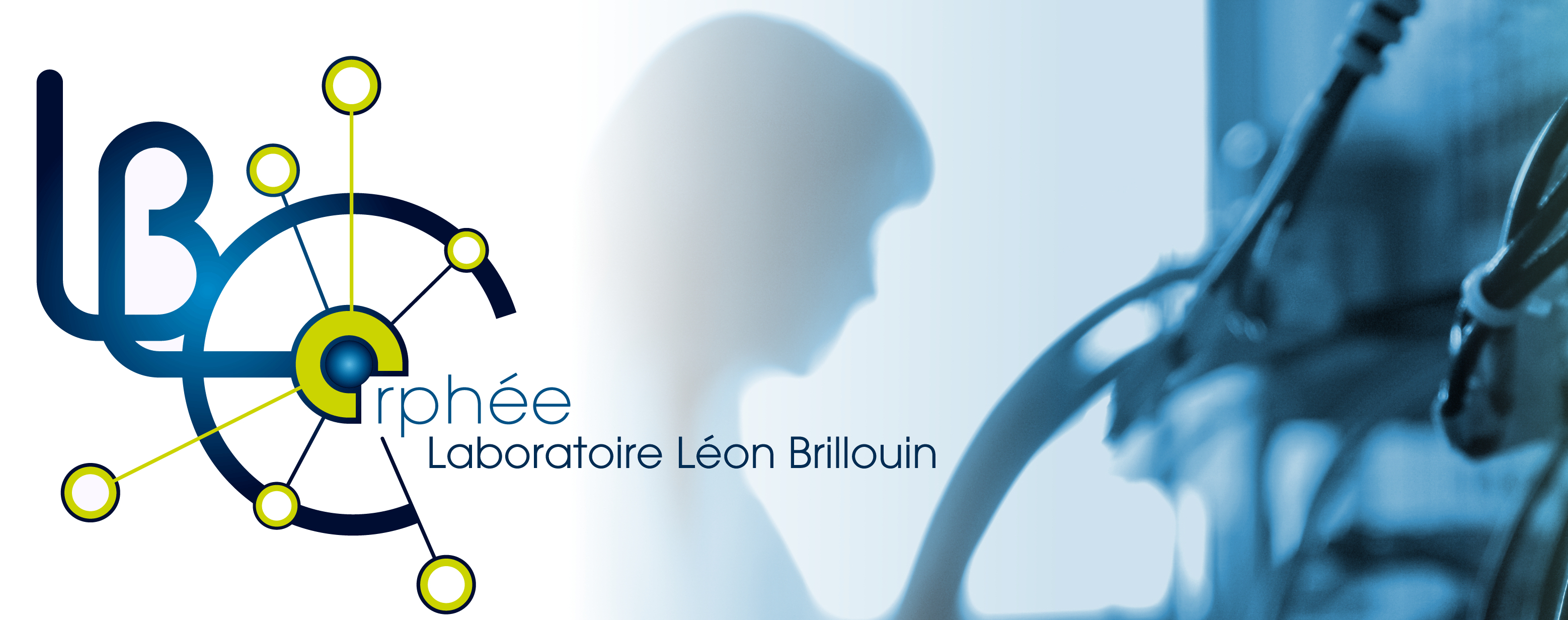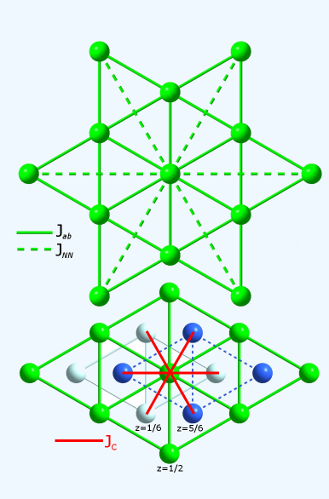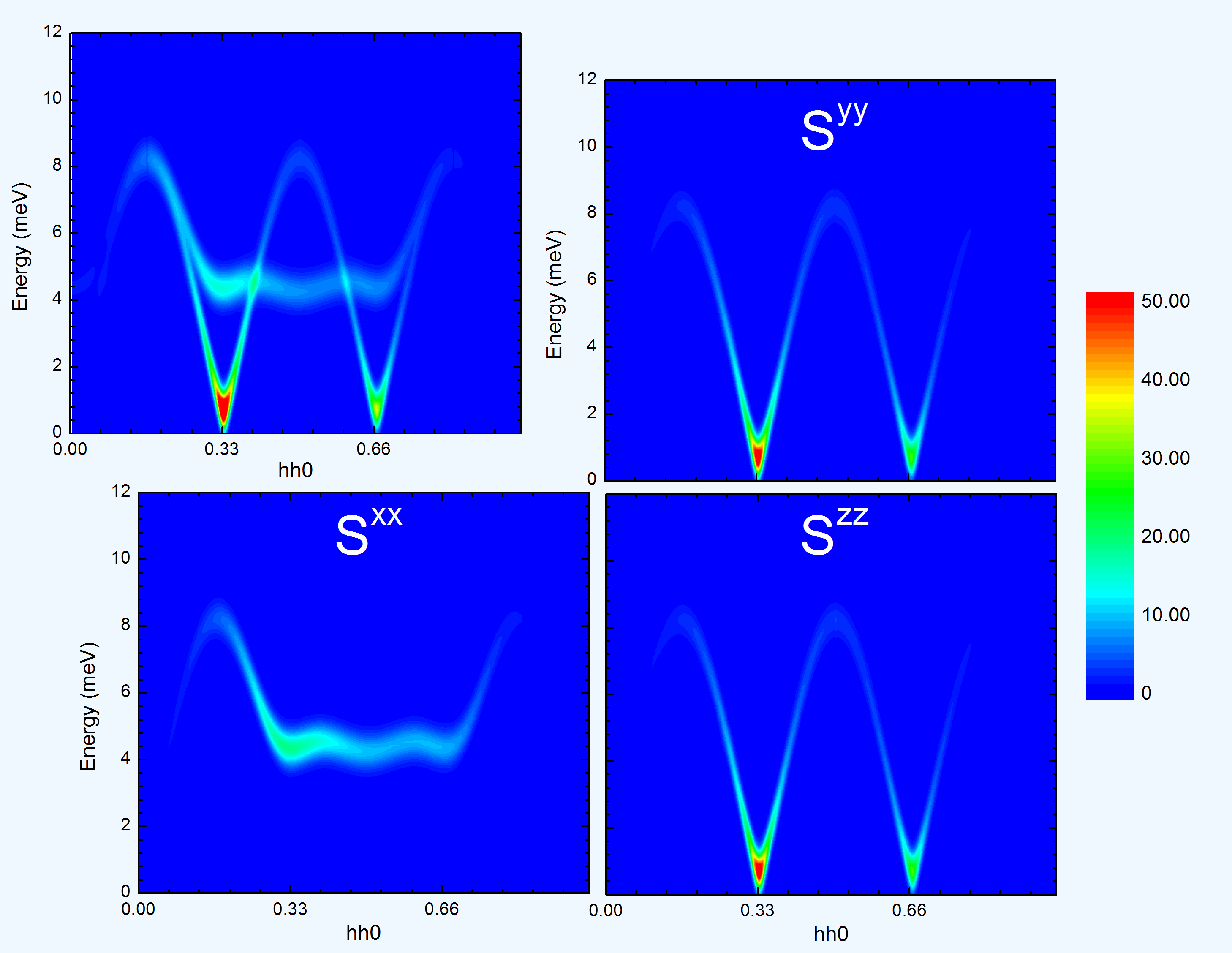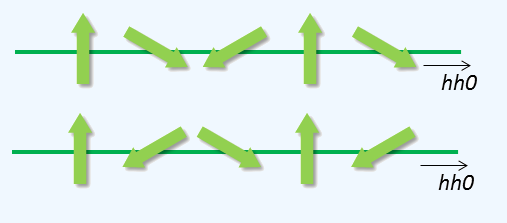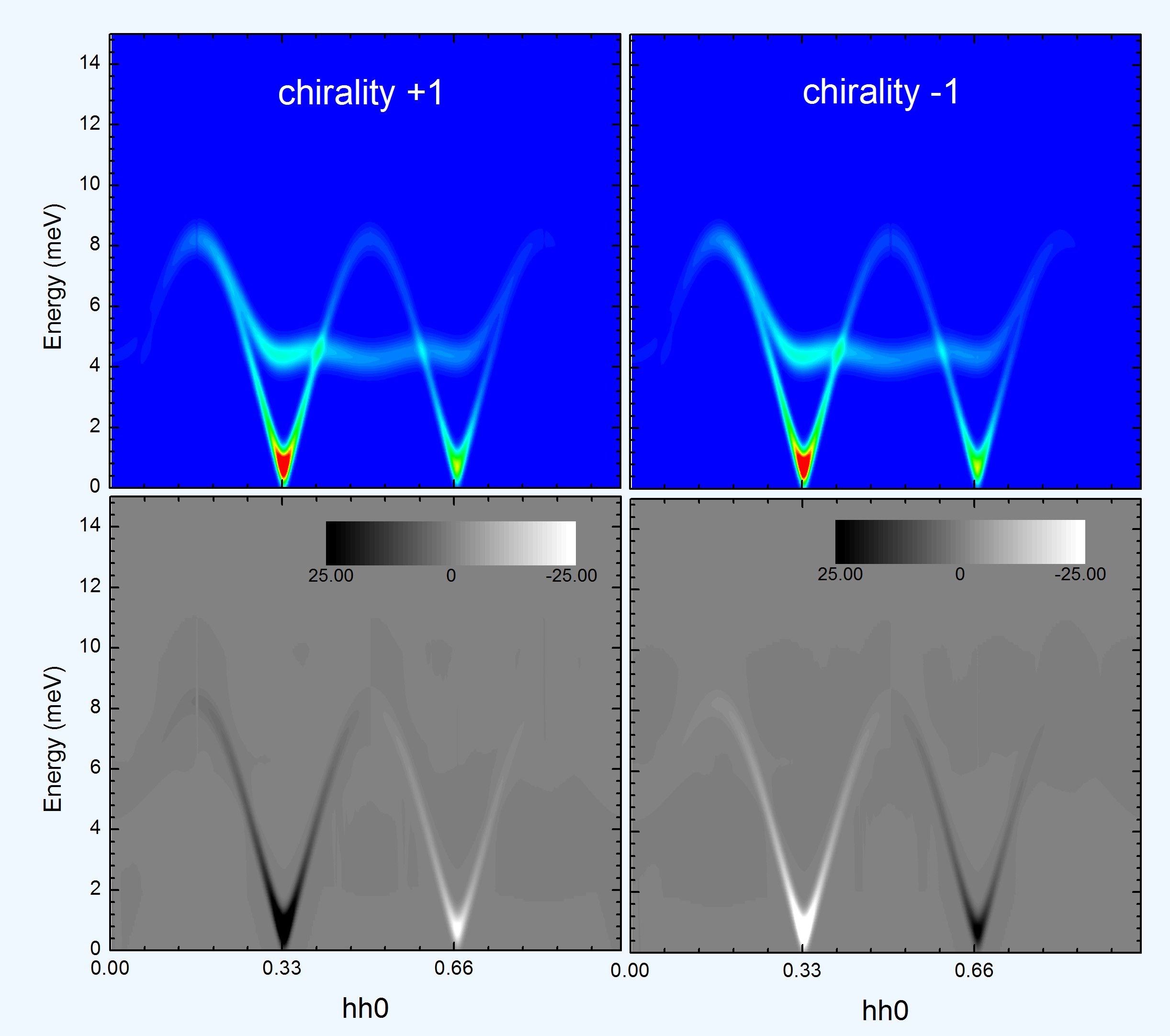Example
Spin-spin correlation functions in CuCrO2
CuCrO2 is characterised by the stacking of perfectly triangular arrays of magnetic Cr3+ (S = 3/2). It orders below TN ~ 24K, the ordered magnetic state being characterised by the incommensurate propagation vector k = (0.329 0.329 0). The Cr spins rotate in the bc plane (that is, with a component perpendicular to the triangular plane), to form a close to 120° helicoidal magnetic structure with a slightly elliptic rotational envelope. Although the magnetic structure is incommensurate, in the case of this example it is approximated to a perfect 120° spin configuration, with a magnetic propagation vector k = (1/3 1/3 0). Each Cr atom is coupled to 6 first-neighbours through Jab, 6 second-neighbours through JNN, and 6 third-neighbours (out-of-plane) through JC, as illustrated on the figure above.
Recent inelastic scattering experiments performed on a single crystal below TN lead to the following parameters in the description of the Heisenberg Hamiltonian : a nearest-neigbour coupling Jab ~ 2.30 meV, a next-nearest neighbor JNN ~ 0.25 meV, and a planar anisotropy term D110 ~ 0.40 meV ; the value of the inter layer coupling JC is small enough to be set to zero without influencing the quality of the spin-wave modelling. The calculations illustrated below shows the spin correlation function as measured in an inelastic scattering experiment, as well as the Sxx, Syy and Szz correlation functions. Sxx correspond to correlation between "out-of-plane" spin components of the cycoilds, while Syy and Szz are identical and correspond to correlations between "in-plane" spin components.
Calculations were also performed for two opposite "chiralities" of the spin cycloid, as illustrated below.
It is rather straightforward to observe that, although the spin dispersion spectrum is exactly the same in both cases, the chiral correlation functions have opposite signs. Spinwaves are intrinsically chiral objects as the magnetic moment rotate around the local magnetisation. Usually, this chiral character is not seen in experiments because of the superposition of magnetic domains with different chiralities. In such cases, it is possible to observed chiral spinwaves using polarised neutron scattering by breaking first the time reversal symmetry, by applying an electric field for example.
The input file corresponding to this case can be found in the download package.
